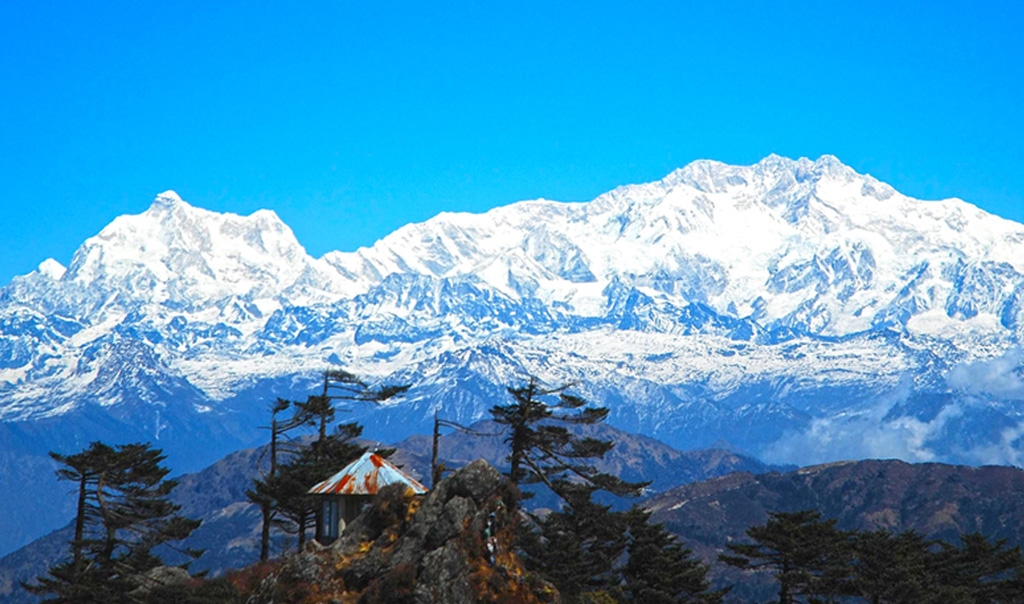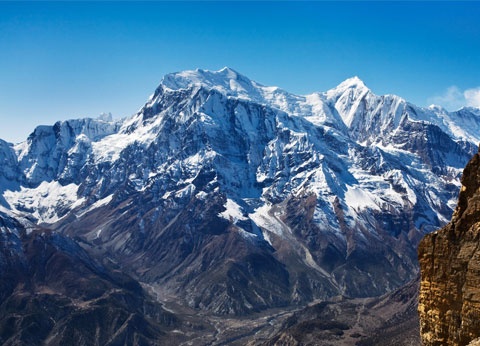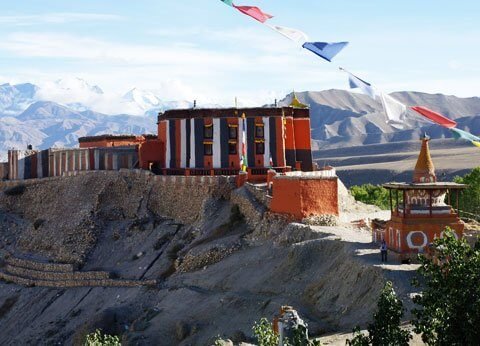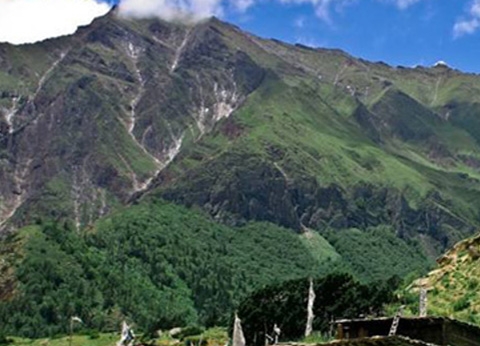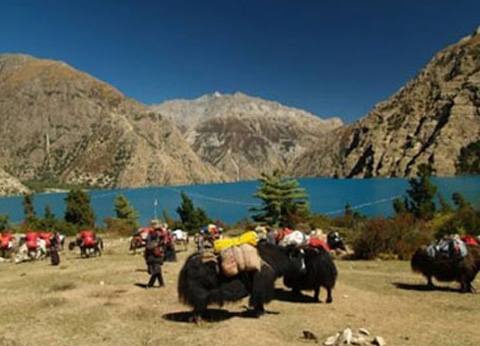Kanchenjunga Base Camp Trek best time
Weather is a crucial factor that determines the nature of a trek. Unlike other trekking routes, Kanchenjunga Base Camp Trek sees less traffic during the spring and autumn seasons. During these seasons, the trek is a bit easier due to fewer chances of rainfall and avalanches.
During winter, the temperature sees a drop of up to -11 degrees Celsius on the base camps. Whereas, at the lower elevations, the temperature fluctuates around 5-8 degrees Celsius.
The temperatures during the morning and night are the coldest and are relatively warmer during the day. Most of the trail is covered in snow throughout the year, which sees an increase in volume during winter. The road becomes treacherous during monsoon due to landslides and floods.
Kanchenjunga Base Camp Trek difficulty
As we have previously stated, the Kanchenjunga Base Camp Trek is unlike any other trek out there. A typical trek in the Kanchenjunga region is bound to exceed 20 days. The trails are demanding as they are extremely isolated and difficult. On average, the trail sees an increase in elevation by at least 400 meters daily. There are two base camps of Mt. Kanchenjunga- north and south.
If you make the trek from the north, the highest point you’ll reach is the Pang Pema base camp. It sits at an elevation of 5,143 meters. From the southern side, the highest point in Ramche. It sits at 4,610 meters. We trek to both base camps.
To reach these heights, you need to walk along the glacial moraines and paths that are incredibly steep. Be prepared to walk for more than 6 hours a day and that too through rocky cliffs & steep uphill paths. Similarly, you also have to be mindful of altitude sickness and deal with almost no modern facilities.
What should I carry during the Kanchenjunga trek?
Before you head out on this milestone journey, you must carry the required essentials to make this trek a success. Carrying unnecessary items will only make this trek difficult and cumbersome. So be sure to pack your necessities carefully. Let’s take a close look at the essentials that are needed to make this trek a success.
The clothes that you need to carry are down jackets, innerwear, caps, hiking socks, trekking trousers, windcheater, and hiking boots. Personal hygiene items like toilet paper, hand sanitizer, moisturizer, shampoo, and towel are also mandatory. For first aid, carry Diamox tablets, antibiotic gel, and bandages. We'll provide you with a packing checklist as well during the booking.
Charging Facilities and WiFi
There are huge electricity problems in these rural areas, and power shortages are a common thing. You need to pay extra bucks if you want to use electricity. To escape this, you can carry a power bank with you.
Only a minor part of the Kanchenjunga region has a phone signal, and only some camps have satellite signals. You can find WiFi facilities in some teahouses, but they cost a fortune. Before you head out, you can purchase an internet package. We prefer that you choose Ncell.
Accommodation
There are tea houses for overnight accommodation on the reeking routes of the Kanchenjunga region. Not many tea houses are built because only a handful of trekkers visit this part of the Himalayas every year. Therefore, the few counted teahouses on the way suffice the need.
The tea houses are simple accommodation. You get a twin sharing a room with a communal washroom. The tea houses are not warm enough, and you may feel cold at night even using the provided blanket. So, we highly recommend you trek with a nice sleeping bag.
If you wish, you can also do a camping trek.
What will I eat during the Kanchenjunga trek?
We give you three meals a day during the trek. In Kathmandu, you get breakfast and farewell/welcome dinner. The meals on the trekking route are quite simple and limited. The staple meal option is dal Bhat which comes with veggies and some other side dishes. It's the freshest option on the menu that not only keeps you healthy but also is delicious and filling.
Some other dishes like mashed potatoes, momo, noodles, Thukpa, Thenduk, porridge, soup, bread, and may be available too. Similarly, it's better to carry your favorite snacks while trekking instead of hoping to buy them on the route.
Permits to do trekking in the Kanchenjunga region
Kanchenjunga region is a restricted area, and in comparison to other regions, you’ll find that the laws here are very strict. To explore it, you’ll need:
- Kanchenjunga Conservation Area Project Entry Permit (KCAP)
- Restricted Area Entry Permit for Yamphuding and Tapethok VDC
The cost of KCAP is Nrs.2000 per person, and this permit does not have time limitations. The RAP costs USD 10 per person, and it remains valid for a week only. To apply for the permit, you’ll need a minimum of two trekkers, and the permit can only be processed through a travel agency that is registered in Nepal.
Child policy
Kanchenjunga Base Camp Trek is a very difficult trek, and trekking with kids might be very challenging for both guardians & the kid themselves. It is not impossible, but strong on-field crew support and proper preparation are required. For more info, talk to our team members.
Personal expenses
The Kanchenjunga region is isolated, so there are instances in which you might have to pay a bit extra to avail certain goods and services. You have to pay for charging your electronic devices, using wifi, etc. Similarly, nothing soothes the soul like a hot water shower in the Himalayas. However, in these parts, it comes with a hefty price tag.
The alternative for hot showers is wet wipes, which although not similar to a shower, get the job done. Porters and guides will accompany you throughout the trek, and you need to pay tips to them too. Then there are charges for international flights, shopping, travel insurance, etc that you have to bear.
Insurance, Rescue, Evacuation
Kanchenjunga Circuit Trek demands necessary travel insurance because of the region's isolation and no proper medical service along the way. Travel insurance is our last resort to provide medical assistance to our guests while trekking. We need documents of travel insurance covering airlift and medical bills at the time of booking.
Our guides are well trained to handle adverse situations in the Himalayas. They are trained in providing first aid and remote survival. So, if any media emergency occurs, the team leader will give you the first aid and see what other assistance is needed.


